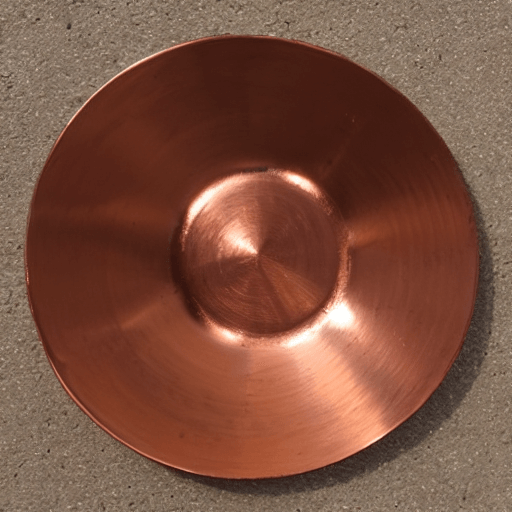Pop quiz, do you know the valency of copper?
Copper is a metal that has been used by humans for thousands of years.
Valency is the number of atoms that a copper atom can bond with.
This makes copper an important element in chemistry and biology.
Let’s review the valency of copper and some of its applications in science!
Copper has a valency of 2.

Explain It To A Child
The valency of copper is two. This means that it can form two chemical bonds with other elements. Copper is found in nature as copper sulfide and copper oxide minerals.
This means that it can form two chemical bonds with other atoms.
In practical terms, this means that copper is very good at transferring electrons between molecules, which is why it is often used in electrical wiring and other devices that need to conduct electricity.
What is the valency of copper?
The valency of copper is two.
This means that it can form two chemical bonds with another element.
Copper is found in nature in the form of copper sulfide and copper oxide minerals.
These minerals are mined and then refined to produce pure copper metal. Copper is a soft, ductile metal that is widely used in electrical wiring and plumbing. It is also used in coins, jewelry, and cookware.
Copper has a reddish-brown color when it is exposed to air.
When it is heated, it turns a greenish-blue color.
Copper is an essential trace element in the human diet. It can be found in food sources such as fruits, vegetables, meat, and grains.
How is the valency of copper determined?

The valency of copper is determined by the number of electrons in the outermost energy level of the atom.
- The valency of an element is related to its ability to form chemical bonds with other elements.
- Copper has an atomic number of 29, which means that it has 29 protons in its nucleus.
- The number of electrons in the outermost energy level determines the valency of an element.
- Copper has 2 electrons in its outermost energy level, so its valency is 2.
This means that it can form chemical bonds with two other elements.
How does copper’s valency help it conduct electricity?

Copper is a particularly good conductor of electricity for several reasons.
One reason is that it has a relatively high valence, meaning that it can easily form ions with a charge.
This makes it easy for electrons to flow through copper wires without much resistance.
Additionally, copper is a non-magnetic metal, meaning that it is not affected by magnetic fields.
This makes it ideal for use in electrical applications, as there is no risk of the wire being disrupted by outside forces.
Finally, copper has a relatively low melting point, meaning that it can easily be drawn into thin wires.
Together, these properties make copper an excellent choice for use in electrical applications.
What are some of the applications of copper in science?
Copper is a chemical element with the symbol Cu and atomic number 29.
It is a soft, malleable, and ductile metal with very high thermal and electrical conductivity.
Pure copper is rather difficult to come by in nature; the vast majority of copper that is mined is in the form of copper sulfides or carbonates.
However, this element has been used by humans for thousands of years, and it continues to play an important role in science and technology today.
Copper is often used as a conductor of electricity, as it is an excellent conductor of heat and electricity.
This element is also used in plumbing, as it does not corrode or react with water. In addition, copper is used in alloys, such as brass and bronze, and it is sometimes used as a coating on other metals to prevent corrosion.
Finally, small amounts of copper are essential for human health; the element helps to form red blood cells and maintain healthy nerve function.
As you can see, copper has many important uses in science and technology.
What other interesting properties does copper have
Copper is a fascinating metal with a long history and a variety of interesting properties. For example, it is the only metal that is naturally colored red. It is also highly conductive, making it an essential component of electrical wiring.
In addition, copper is non-magnetic and has a high resistance to corrosion.
These properties make copper an ideal material for a wide range of applications, from electrical wiring to plumbing to roofing.
Copper is also a key ingredient in many alloys, such as brass and bronze.
The unique combination of properties possessed by copper makes it a metal that is truly essential to our modern way of life.
Why is copper such an important element in chemistry and biology
Copper is one of the few metallic elements that are essential to human health.
It plays a role in the formation of red blood cells and helps to keep nerves and bones healthy.
Copper is also involved in a number of chemical reactions, including the metabolism of iron and the production of energy.
In addition, copper is an important component of many enzymes, which are responsible for a wide range of biological processes.
For example, copper is needed for the synthesis of collagen and for the absorption of vitamin C.
In short, copper is essential for both chemistry and biology.
Therefore the valency of copper is 2 and it is a good conductor of electricity.
Article Sources
Jacks of Science sources the most authoritative, trustworthy, and highly recognized institutions for our article research. Learn more about our Editorial Teams process and diligence in verifying the accuracy of every article we publish.
